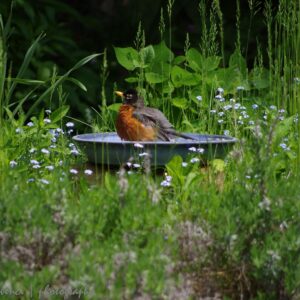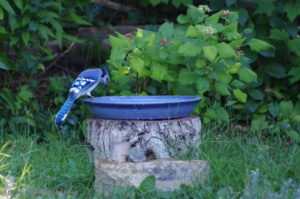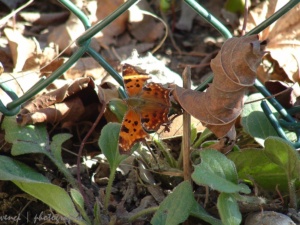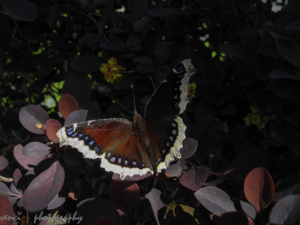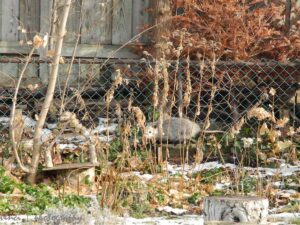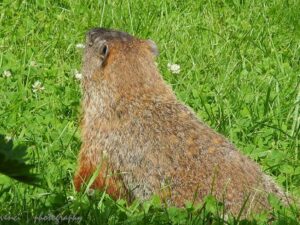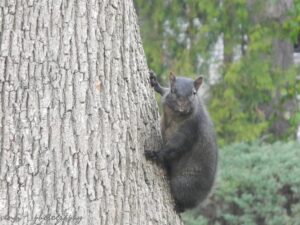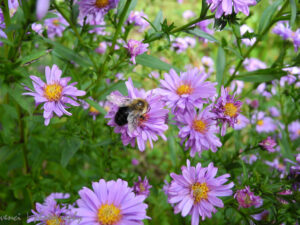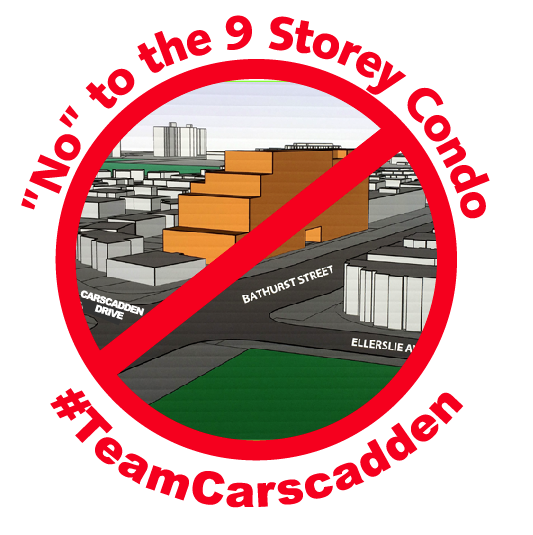Imagine a Toronto with flourishing natural habitats and an urban environment made safe for a great diversity of wildlife species. Envision a city whose residents treasure their daily encounters with the remarkable and inspiring world of nature, and the variety of plants and animals who share this world with us.
4700 Bathurst St. is less than 100 m away from Carscadden Greenbelt. A narrow and quiet Carscadden St, with a dozen of semidetached houses and their backyards serves as a natural transition to the Greenbelt ravine. The proposed condo development, if approved will endanger and harm this very fragile, but very important local ecosystem. The environmental impacts would be irreversible.


Importance of Corridors (including Backyards):
Habitat loss and fragmentation is largely caused by urban and agricultural development. After development, the remaining greenspaces are often the only local natural habitat left. Wildlife corridors are green spaces that allow wildlife to travel from one area to another. These corridors must be preserved because they are essential for the survival of wildlife populations as they provide direct habitat and genetic exchange. Corridors play a very important role in the successful breeding of wild mammals. They allow mammals to move to new areas to seek prospective mates and allow young to successfully disperse to spread their genes elsewhere. In urban areas, corridors are the only appropriate means that wild mammals have to leave and establish their own home and territory. Corridors in Toronto include the Humber and Don River ravines. There are many parklands along these rivers and these spaces provide appropriate wildlife habitats that are connected. Other critical wildlife corridors in the city are utility corridors, like hydro rights-of-way, and even our own backyards. These spaces are much more important than many of us realize because of the essential role they play in the viability of Toronto’s ecosystems. The greater the number of corridors and green spaces within Toronto, and the better connected these areas are to one another, the more healthy our wildlife and plant communities are and consequently so too is the overall biodiversity. Biodiversity affords Torontonians a high quality of life and a healthy economy. Corridors and green spaces provide increased opportunities for human relaxation, education, and wildlife viewing. They also help control or mitigate pollution, temperature, climate and noise. It is difficult to imagine a life in the city where biodiversity continues to decrease; where there is more concrete, more smog and pollution, less green space in which to live, and decreased animal populations. Protecting and restoring green spaces and corridors is absolutely necessary to maintain and improve our quality of life.
Importance of Ravines and Backyards:
Ravines act as green corridors in an otherwise hostile urban landscape and provide important habitat for both migrating and resident mammals and birds. In the spring and fall, migrating birds move through city ravines in huge numbers on their long journeys, foraging and finding shelter. Locally bred birds, recently fledged and independent youngsters that were raised in green spaces across the city, depend on the connectivity of ravines to provide safe access to migration gathering areas on the lakeshore. In addition, these corridors are the routes that allow resident birds to disperse across the landscape, helping to ensure genetic health through increased breeding opportunities. City green spaces are usually isolated fragments of natural habitat or “natural islands” in an urban environment, which often means that birds cannot safely move between green spaces. In this respect, even small residential backyards provide important habitat for birds to spread throughout the city.
Birds:
Birds are essential to a healthy ecology; they consume billions of insects daily, pollinate plants, and disperse seeds. Collisions with human made structures are the second biggest (after habitat loss) threat to bird populations in North America. Hundreds of millions of birds die each year because they fly into buildings, vehicles, communication towers, power lines and wind turbines. The design and location of buildings and other structures plays a huge role in how lethal they are to birds.
According to the Fatal Light Awareness Program https://flap.org, at least 64 of 162 species of birds found killed by collisions with Toronto buildings are threatened. An estimated 1 to 10 birds die per building, per year. The City of Toronto has over 950,000 registered buildings that could potentially kill over 9 million birds each year.
Species observed (and photographed) along the tree line:
Northern Cardinal, American Robin, American Goldfinch, Common Nighthawk, Blue Jay, Downy Woodpecker, American Tree Sparrow, House Finch, Hummingbird, Pigeon, Yellow Warbler, American Crow, Common Raven, Monarch, Eastern Comma, American Lady, Morning Cloak, Eastern Tiger Swallowtail, Virginia Opossum, Groundhog, Red fox, European Hare, Striped Skunk, Eastern Chipmunk, Eastern grey squirrel, Grey Squirrel (black morph), Milksnake, Virginia Carpenter Bee, Raccoon and many others…


